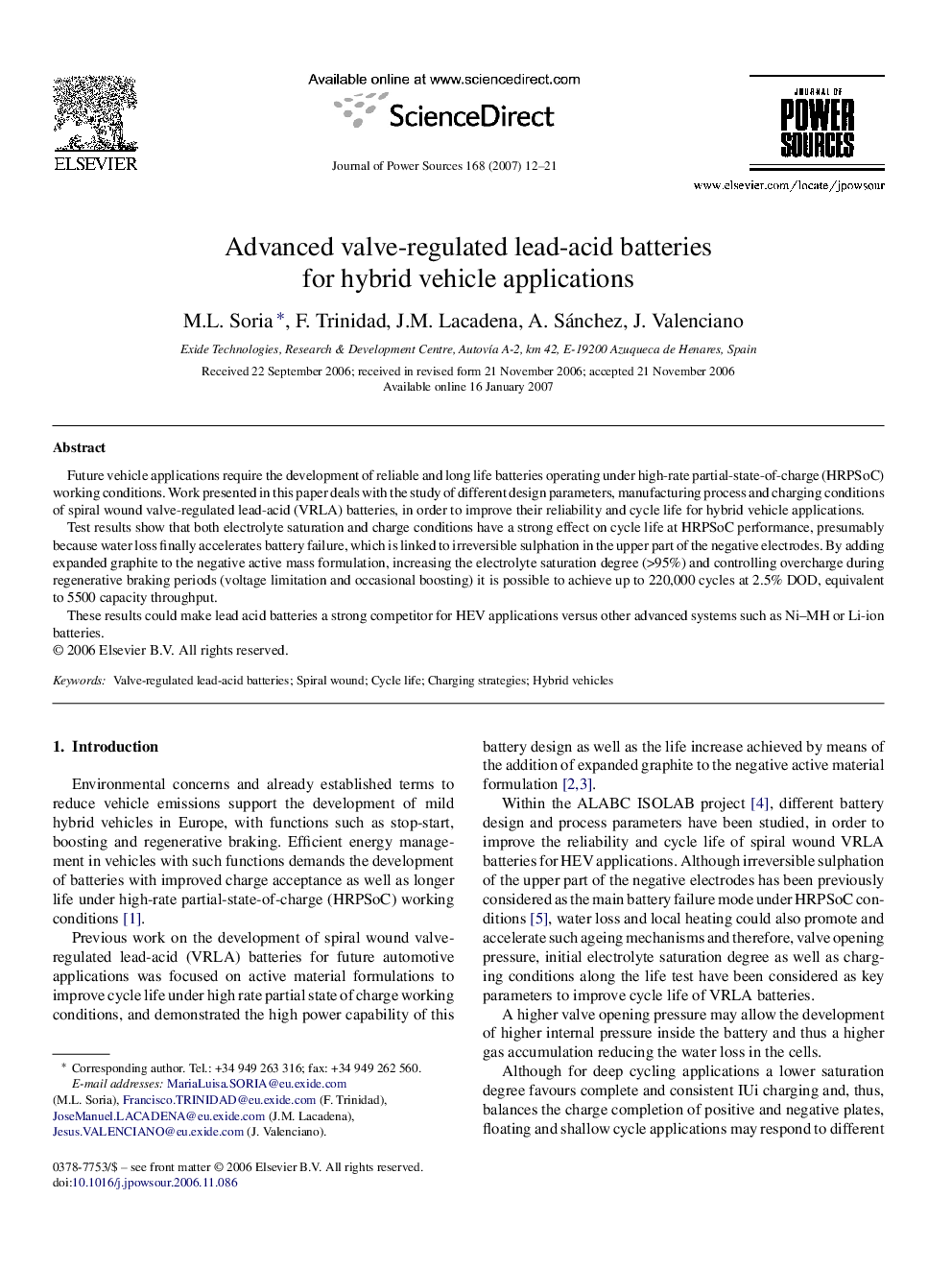| Article ID | Journal | Published Year | Pages | File Type |
|---|---|---|---|---|
| 1286525 | Journal of Power Sources | 2007 | 10 Pages |
Future vehicle applications require the development of reliable and long life batteries operating under high-rate partial-state-of-charge (HRPSoC) working conditions. Work presented in this paper deals with the study of different design parameters, manufacturing process and charging conditions of spiral wound valve-regulated lead-acid (VRLA) batteries, in order to improve their reliability and cycle life for hybrid vehicle applications.Test results show that both electrolyte saturation and charge conditions have a strong effect on cycle life at HRPSoC performance, presumably because water loss finally accelerates battery failure, which is linked to irreversible sulphation in the upper part of the negative electrodes. By adding expanded graphite to the negative active mass formulation, increasing the electrolyte saturation degree (>95%) and controlling overcharge during regenerative braking periods (voltage limitation and occasional boosting) it is possible to achieve up to 220,000 cycles at 2.5% DOD, equivalent to 5500 capacity throughput.These results could make lead acid batteries a strong competitor for HEV applications versus other advanced systems such as Ni–MH or Li-ion batteries.
